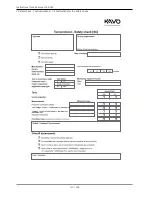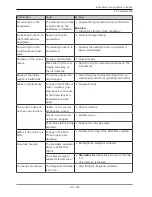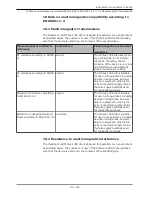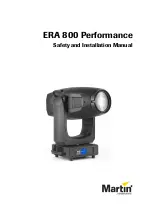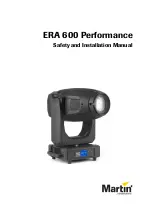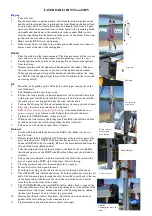
Instructions for use Primus 1058 Life
10 Data on electromagnetic compatibility according to EN 60601-1-2 | 10.4 Immunity to electromagnetic interfer-
ence
122 / 126
Interference im-
munity tests
EN 60601 test level Compliance level
Electromagnetic environment
- Guidelines
Wire-based HF inter-
ference according to
EN 61000-4-6
Wireless HF interfer-
ence according to EN
61000-4-3
3 V
eff
150 kHz to 80 MHz
outside the ISM
bands
a
3 V/m
80 MHz to 2.5 GHz
3 V
eff
3 V/m
Handheld and mobile wireless
devices should not be used at a
shorter distance from the Primus
1058 Life including cables than
the recommended safe clearance
calculated using the appropriate
equation for the emission fre-
quency.
Recommended safe distance:
d = 1.17
P
d= 1.17
P
for 80 MHz to 800
MHz
d= 2.33
P
for 800 MHz to 2.5
GHz
where P is the maximal nominal
power of the transmitter in watts
(W) as specified by the transmit-
ter manufacturer and d is the re-
commended safe clearance in
metres (m).
b
The field strength of stationary
wireless radio transmitters as
measured locally
c
should be
lower than the conformance level
at all frequencies.
d
Interference is possible in the vi-
cinity of devices bearing the fol-
lowing icon.
Note 1: At 80 MHz and 800 MHz, the higher frequency range applies.
Note 2: These guidelines may not be applicable in every case. The propagation
of electromagnetic waves is subject to absorption and reflection by buildings,
objects, and people.
a
The ISM frequency bands (for industrial, scientific, and medical applications)
between 150 kHZ and 80 MHz are 6.765 MHz to 6.795 MHz; 13.553 MHz to
13.567 MHz; 26.957 MHz to 27.283 MHz, and 40.66 MHz to 40.70 MHz.
b
The compliance levels in the ISM frequency bands between 150 kHz and 80
MHz and in the frequency range from 80 MHz to 2.5 GHz are intended to re-
duce the probability of mobile/handheld communications facilities causing inter-
ference when they are inadvertently introduced into the patient area. For this
reason, the additional factor of 10/3 is applied in the calculation of the recom-
mended safe clearances in these ranges of frequencies.
c
The field strength of stationary transmitters, such as, e.g. base stations of mo-
bile phones and mobile terrestrial radio devices, amateur radio stations, AM and
FM radio and television transmitters, cannot be determined exactly based on
theoretical considerations. A site study should be considered to determine the
electromagnetic environment in terms of stationary transmitters. If the meas-
ured field strength at the site, at which the Primus 1058 Life is used, exceeds
the compliance levels shown above, the Primus 1058 Life should be monitored
to demonstrate proper function. If any uncommon performance characteristics
are observed, additional measures may be required, such as, e.g., changing the
orientation or using a different location for the Primus 1058 Life.
Summary of Contents for KaVo Primus 1058 Life TM
Page 1: ...Instructions for use Primus 1058 Life...
Page 124: ......
Page 125: ......
Page 126: ...1 011 8573 Fk 20181009 6 en...



